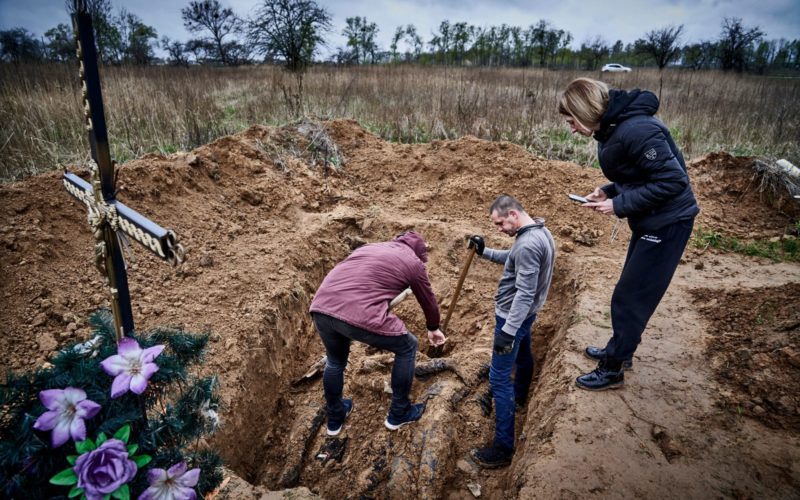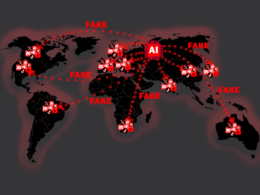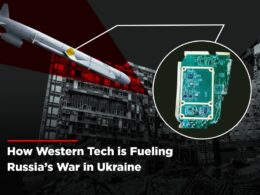Oksana is afraid, so she prefers to stay in the garden. She took a chair out of the house while everything was done. She sits and smokes IQOS, and her gaze wanders somewhere above the cellar, above the trees. Cherries are blooming, the grass has covered the yard with a green carpet – death now seems inappropriate and untimely. But it is here, in Oksana’s garden. Her brother, who was shot dead by the Russians, is being dug up. Half of his skull was torn off, and his head became a bloody mess. New mass graves are found every day in Borodyanka, Kyiv Region. There is a shortage of diggers, equipment, and morgue workers. How people are exhumed and reburied – in the report by “Texts”.
Red sneakers of 43 size
The communal cemetery in Borodyanka is full of fresh wreaths. We came here for the first time on April 26, when on one side of his grave a mass grave was being exhumed, and on the other side, the dead who were found under the rubble of houses were about to be buried. This is not the first batch, according to the head of the local housing and communal services Yuriy Patoka – there are already 18 such burials, but the number changes every day. Just like mushrooms after the rain, after the occupation, new mass graves appear every day: in cemeteries, on the territory of the hospital, in people’s gardens and orchards. Peasants want to plant potatoes, but there are dead bodies in the fields.
Several men, about 30 of them, leaned over one of the graves in the cemetery. They were gloomy, silent, and laconic. They change each other: someone digs, someone goes on a smoke break. The grave was made hastily – during the occupation, several locals brought here five dead people and buried them under fire. Men dig about a meter and a half until from under the sandy soil one can see the bodies stacked next to each other, like fish in a can. After more than a month of lying down, you can’t see the face – now there is a swamp-purple mash in their place. Only clothes, shoes, tattoos, and someone’s ring on his finger – all these investigators write in the reports as “special features”, by which then someone will be able to recognize a loved one.
Serhiy Kovalchuk, one of the guys, is now digging up his brother Kolya. They had a year of age difference, and both worked as builders, only in different teams. They were similar in height and even wore the same shoe size – 43rd. When Kolya was shot dead by the Russians, he was wearing his brother’s shoes. Now it makes it easier to recognize. Of the five bodies, only one is identified when Serhiy immediately recognizes the red sneakers.
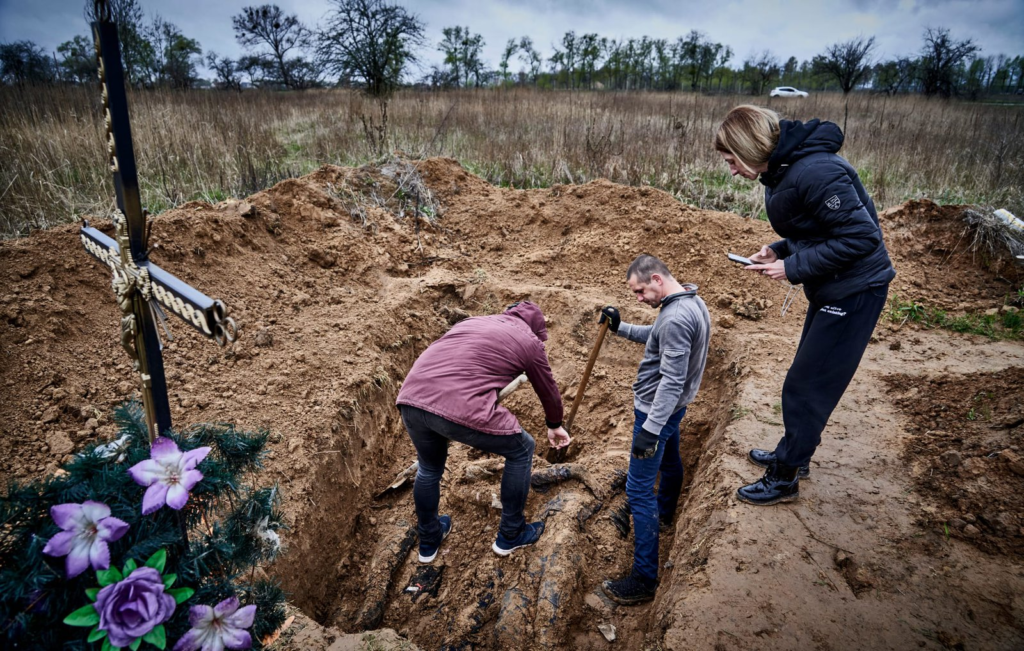
There are not enough diggers – there are ten of them in Housing and Communal Services, and so far there has never been a need to keep more. In Borodyanka, 41 people have already been found under the rubble of houses, and more than 300 are in burials found after the occupation, the local police told us. Diggers in Borodyanka are excavating burials that were made during the occupation and at the same time preparing new graves for reburial. To book their services, you have to wait. So Serhiy’s friends help him – he brought a bottle of vodka and apples to thank them.
There are not enough diggers – there are ten of them in Housing and Communal Services, and so far there has never been a need to keep more
Bodies cannot be removed from the grave without the police. The guys are waiting for the investigators to arrive. Serhiy collected information about what happened to his brother from neighbors because he and his mother were hiding from the shelling. Kolya lived with them.
So it is known that on March 4, his brother and three friends drove to the center to the store. Russian soldiers started firing at the car to stop it. Everyone came out and was ordered to raise their hands. Serhiy was told about this by one of the guys who survived – he was immediately shot in the leg and pelvis, and now he is in a wheelchair.
“I fell, lay down, and saw: your brother is lying, pale. He didn’t suffer for a long time,” – Serhiy recounts the words of the young man who survived. It is unclear exactly how Kolya was shot. Who is still alive – too. Serhiy did not know the other guys.
Another white spot in this story is who moved the bodies from the store to the church. It is known that the guy who eventually dug up this mass grave found five dead bodies near the church on the morning of March 5. The priest gave his “UAZ-469”, and the bodies were taken to the cemetery. The young man, the one who found and brought the bodies and also was one of the diggers, told Serhiy that he and his comrades did it in a hurry. The shelling began, so they threw shovels and hid in houses. They returned in half an hour, when it calmed down, finished, and put the cross as a distinctive sign.
The same guy said to Serhiy: “Maybe I buried your brother.” “Maybe”, agreed Serhiy, because he hadn’t seen him in three weeks.
And now, when a police squad arrives, Serhiy testifies: yes, this is his brother. One is identified from the tomb of the nameless. Police arrive with a car of “Cargo 200” – a volunteer organization that takes the bodies to the morgue. The local mayor’s office negotiated with the organization. The transport was provided by a Chernivtsi construction company, which pays for fuel and a hotel for two drivers, also from Bukovyna [Chernivtsi region]. Two volunteers are with them, this time from the Kyiv region. They put on medical masks and gloves and begin to retrieve the bodies from the grave one by one.
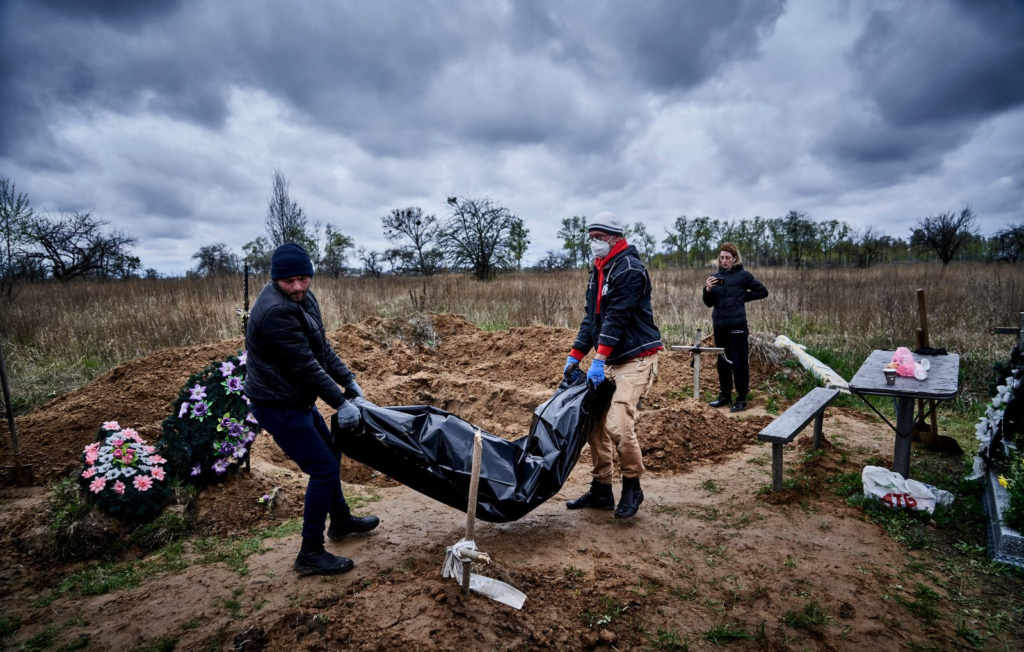
Policewoman Victoria Nemyrova is inspecting. She photographs each body and writes down special features in the notes on the phone: a ring on the hand, a bandaged leg, clothes, tattoos. There are few such signs on bodies that have been lying on the ground for more than a month and a half. For example, says a policewoman, it is difficult to establish the nature of the wound. The body itself seems unnaturally elongated, but, as the morgue forensic expert will later explain, it is only an optical perception: we are used to looking at people in an upright position, and now a different angle of view.
After the examination, the volunteers pack each body in a black thick bag case. They need to be numbered, but the white marker has disappeared somewhere. Medical masks come to the rescue – they write the number on them and fasten them to the bag.
Serhiy’s brother is a bag № 5. The brother of the deceased must provide his passport data and contact the police, who, when they know, will inform which morgue the bodies will be taken to. The morgues are overcrowded, so they are figuring out where to take it in the process with the chief forensic expert of the region, who tells the police where there are places now.
The guy who was digging the grave did not want to come to testify, no one insisted on his presence. In addition to the bodies, a holster for a pistol and an empty waist bag was found in the grave. The police did not take them.
“Why didn’t they take it?” – Someone in the cemetery asks.
“This is evidence of murder, but where will you find the killer?” – Serhiy’s friend, who dug the grave, is chewing an apple. “Everyone will be listed as a war casualty.”
The victims are unknown, as are their killers. But another victim from this grave will be identified in a few days.
The queue for death
On April 26, Oksana Tovkach followed everyone around the cemetery: “Dig up my brother,” she says to the diggers, to the head of the housing and communal services, Yuri Patoka. She is gradually losing patience because it was her turn after a week of waiting. Her brother Volodymyr’s body lay in a temporary grave for more than a month, and Oksana initially worried that he could not be buried until 40 days after his death, when, according to Christian beliefs, the deceased’s soul finds final rest in heaven or hell. And now I would just dig.
The head of the Housing and Communal Services promised her communal diggers for today, but it turned out that they were preparing 11 graves for the bodies to be brought from the morgue in Bila Tserkva. Patoka tries to get away from Oksana, and only when two foreign journalists, who are going to film the process, offer the woman to dig a grave himself, he decides that it is better to release two diggers.
The man is buried in his yard. Oksana, a native of Borodyanka, and a resident of Vyshneve lived with her family in the Ternopil region in March. On March 12, their mobile connection with relatives disappeared – the woman did not know what was happening in her home village. On April 1, after Borodyanka’s liberation, her cousin said: she has no brother, he was killed on March 16.
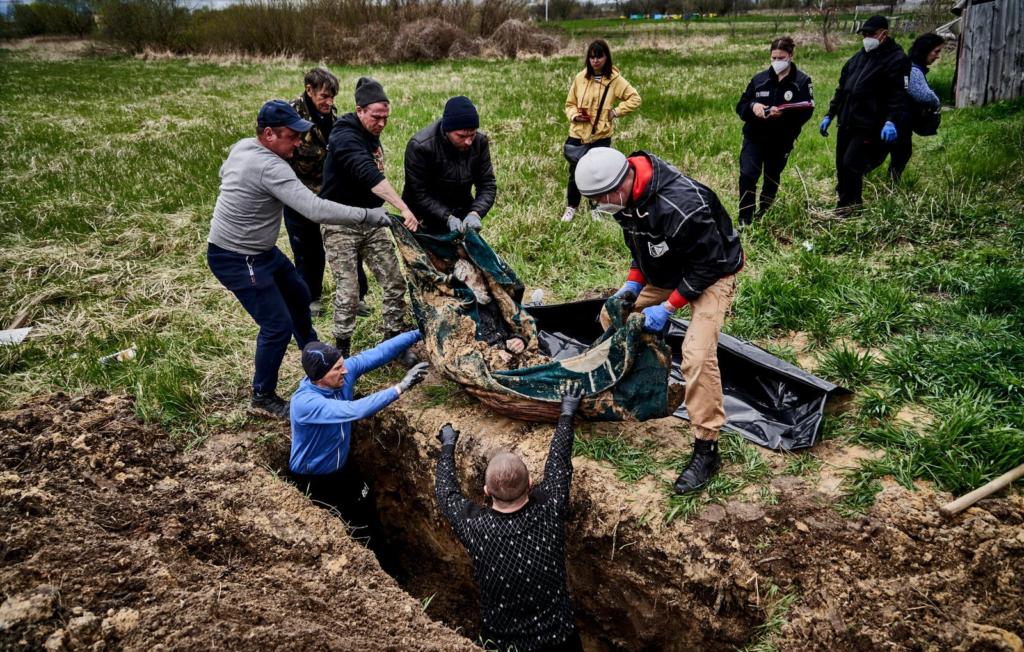
The date and cause of death were known from neighbors. The man was found shot near the bakery. He lay there for three days until his cousin and her husband came and took him away. At first he was placed either in a house or in a barn, and the next day the grave was dug under the roar of shells. They laid straw in the pit, marked the place with a cross, and took photos.
Oksana is afraid to see how the body will be retrieved, so she prefers to stay in the garden. She took a chair out of the house while everything was done. She is sitting, smoking an IQOS, her gaze wanders somewhere above the cellar, above the trees. Cherries are blooming, the grass has covered the yard with a green carpet – death seems inappropriate and untimely right now.
In addition to death, there are formalities. When Oksana found out about her brother’s death, she didn’t know what to do and what to do to rebury her relative. In the Facebook group about Borodyanka, she searched for various telephone numbers: the prosecutor’s office, the police, and Housing and Communal Services. People wrote what they were doing. Everywhere you have to stand in line: write a statement to the police for the exhumation of the body, draw up an act in the yard of the burial, and wait for the diggers. Also, she had to testify in the prosecutor’s office to record a war crime. This information is transferred from the prosecutor’s office to the SBU [Security Service of Ukraine].
She is sitting, smoking an IQOS, her gaze wanders somewhere above the cellar, above the trees
Finally, the diggers get to work. The pit is two meters deep – somewhere there is groundwater, and where the body lies, a swamp was formed. The deceased is wrapped in a dense blanket – green in pink flowers, you could wrap up in such blanket when watching a movie. The blanket gained moisture and became heavier, so the body was removed by five people.
The man was shot in the head, half of his skull was torn off, and the head on the right was a bloody mess. Oksana’s uncle recognizes the deceased. Further formalities – to specify personal and passport data of the deceased, to take a phone number of the police officer to inform from which morgue then to take away a body.
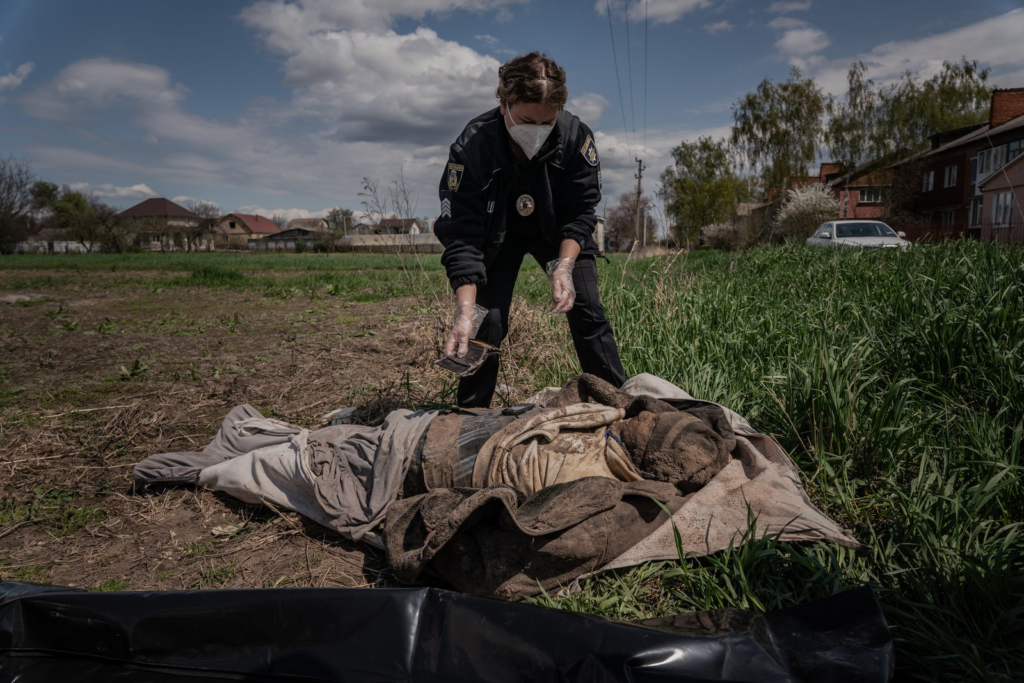
When the “Cargo-200” car with a body in a black bag leaves the yard, Oksana starts crying. She goes on the road with her uncle, they talk to a neighbor – he recently buried his son, who died under the rubble of houses in Borodyanka. In a few minutes, everyone leaves – each in his direction, each with his grief.
Digging graves is not the most enjoyable job, as is examining bodies. But Tetiana, a policewoman who had just examined and photographed Oksana’s brother, learned to cope. We accompany her on several more such trips on different days. She keeps repeating her protocol questions when people burst into tears instead of answering or recalling memories, otherwise, she won’t be able to work.
Tetiana leans over the male body, which was dug up in the garden. She takes a wallet from his pocket. It is empty but has bank cards inside. Thanks to the name on the card, they quickly find out that he can be recognized by his wife- they are afraid not to meet her at home because they are “dysfunctional”.
The wife at home is a 60-year-old woman with sore feet that are rotting. She recognizes the deceased by his poor clothes and personal things. She cries.
11 graves that were recognized
Yuri Patoka, who heads the Housing and Communal Services, says that if in the pre-war period four funerals a day were considered an extraordinary event for Borodyanka, now they have more funerals every day. Serhiy from the volunteer mission “Cargo-200” (Chernivtsi company “Budmontazhservis” provided a car and drivers, they do all the work on transporting the dead) confirms: in one day they take to the morgue from 7 to 11 bodies only in the Kyiv region. They start working in the morning, collect the body during the day and deliver it for autopsy in the evening.
If in peacetime they dealt mainly with natural deaths (from age and disease), today, during the war, almost all violent deaths have to go through the morgue. Murder, shooting, airstrikes, and shrapnel wounds – all fall into the category of “Signs of violent death”.
In their village, most of the killed young men were shot in the head, Patoka said, and a forensic expert from Bila Tserkva added that the allegation was true not only of Borodyanka. The same story is in Bucha and Makariv – the main settlements from where bodies are taken to this morgue.
So diggers do not have time to dig, and overcrowded morgues are not able to keep bodies for long. Therefore, it turned out that all 11 bodies that were buried on April 26 in Borodyansky Cemetery as unidentified, were recognized in a few days. Not all of them are local – “Cargo-200” picked up the bodies on the way to the villages, but in the morgue they were all listed as from Borodyanka, so they returned there.
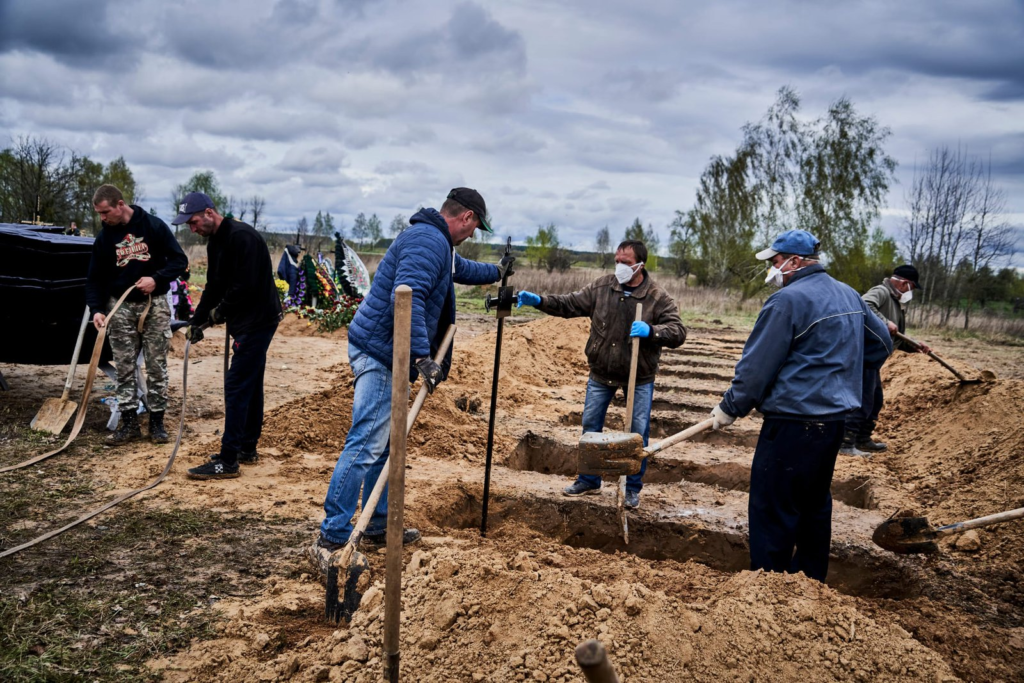
The number on the cross under which he was buried coincides with the number on the black case bag (this data is also stored in the morgue, as well as DNA samples). People do not have time to quickly identify bodies in the morgue: some are just returning from abroad, where they escaped the occupation, and some do not know exactly where the body may be and have little time to search.
Therefore, relatives or friends of the deceased, who want to rebury them elsewhere, must again obtain permission to exhume graves. And new ones will be buried in the vacated places.
Recognize the body: morgue
+17 Celcius on the street, and the refrigerator, where 35 bodies are waiting to be identified, is not connected to electricity. She is standing right in the hospital yard, at the morgue door. This is Bila Tserkva, from where 11 bodies were taken to Borodyanka, which became known after the funeral.
But even if the camera was powered, it wouldn’t be very good, because it doesn’t keep the right temperature, – forensic expert Ihor Viktorovych doesn’t try to hide the truth. Ideally, there should be a refrigerator at -15 – such, for example, is in Boyarka, but not here.
The door is open so that at least air can circulate. There is a stench of corpses, flies are circling, which lay larvae, and blood stains are spreading on the floor in some places. To improve the situation a little, forensic experts pack each body in two or three bags – at least there are still bags.
A refrigeration chamber was brought here earlier to isolate the bodies during the pandemic. Now it is useful for war victims. There is no place to put people, says Igor Viktorovich. The capacity of their morgue is not provided for such a number. Moreover, except for the killed, those who die their death have not disappeared.
The bodies of those killed in the war began to be transported to the morgue in Bila Tserkva on April 6. About 160 of them have now arrived. This is less than in other morgues in the region, but there is no shortage of work. The age of those killed ranged from 13 to 80, with the majority of men and a minority of women. No signs of rape were found among these 160 bodies. Men older than 15-year-old were killed by bullets and shot in the head.
When the police draw up a report on each body, forensic experts undertake an examination. If they find damage to the body that could have caused death, they “take objects for examination” – that is, cut off pieces of skin with injuries. Then you do not need to do an autopsy. If there are none, the body is cut. Cases of gunshot wounds are transferred to the regional bureau, which has a forensic laboratory. DNA is being taken, and all samples are being handed over to the police.
While we are talking, there is a queue of five or six people for identification. To find the right body in numbered bags, you need to drag dozens of them, and then load into the coffin – no one to do it. A young woman – operative from the police, who has to write reports on the results of the procedure, cannot start working because of this.
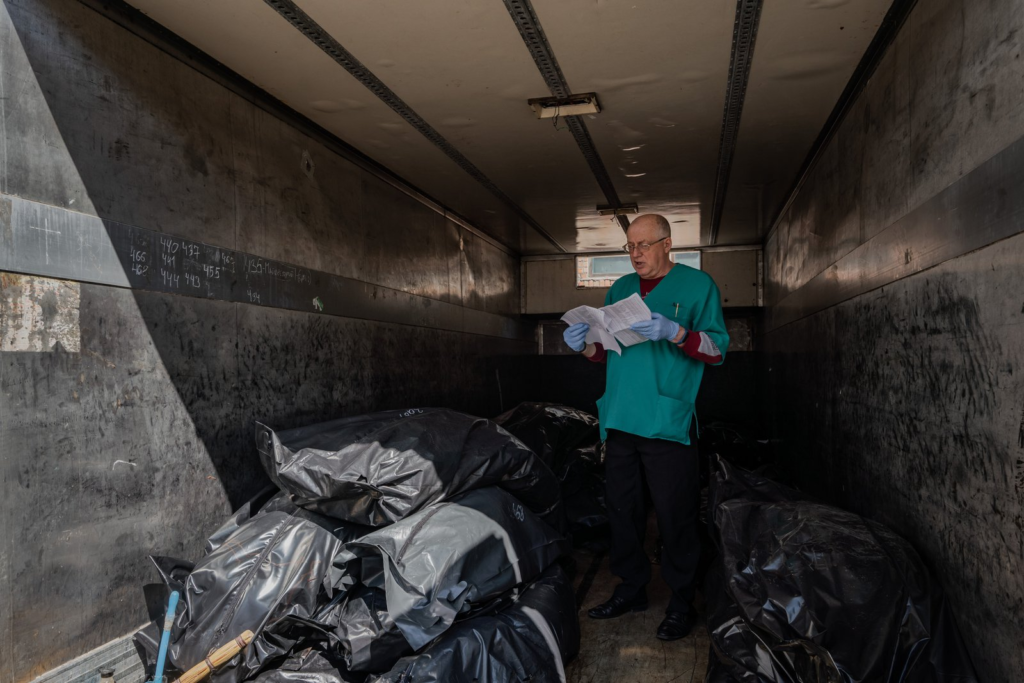
Until recently, cadet police officers helped, but have already gone to study. It was not their job, but no one else’s. And whose? It is not known, that before such work simply did not exist. The guys created a system: the numbers of the bags were laid out on the two walls of the cell and the numbers of who was lying where were duplicated on the walls.
Igor calls someone and asks for help, and while they wait, the bodies are taken away by people who can do it themselves.
A man in a military uniform approaches the cell in a bus, accompanied by his fellow Marines. Yesterday, the man recognized his 22-year-old son here: shot to the head, his hands tied behind his back. He died in Bucha. The father opens the bag again and carries it to the coffin with his friends. Brown liquid drips on the snow-white upholstery of the tomb.
Yesterday, the man recognized his 22-year-old son here: shot to the head, his hands tied behind his back
To make it easier for people to search, the police are posting photos of bodies from mass graves in the telegram community “Victims in the Bucha district.”
“An unknown male person, who was found on April 8, 2022, near the highway in the direction of the village of Blystavytsia, was taken to the SME [Kyiv Regional Bureau of Forensic Medical Examination]. Corpse № 228», – a typical ad from the group. If documents are found on the person, they add the last name and first name. Those who are looking for it can call the attached police number – they will tell you in which morgue the corpse is.
In this community, the man found a son. He does not know the details of how he died – he then served on the other side of the country. Taking away the death certificate is the last formality before the funeral.
Igor Viktorovich has been working in the morgue since 1987, but what happens now happens for the first time with him – as with everyone. His field is bad news, but he sees a good purpose in his work. It helps victims not to remain unrecognized.
“In World War II, everyone was buried in a group, no one cared. Now the Russians have the same attitude, they don’t care about people – they do not take the bodies of their comrades home. For us, it doesn’t matter how hard it could be, but the laws are obeyed. We dig up, do examinations, take DNA – it means a lot.”
Unless a person burns so that there is nothing to take. If no one knows where and when this person could have been burned, the documents will indicate him as an unknown person.
All that is left of it is a handful of ashes placed in a cellophane bag.
To find a son
On April 26, the day when a grave is excavated on one side of the cemetery and the dead are buried on the other, a woman rushes between them. She came here on a bicycle with a photo in her hands. She is upset that she missed the excavations – she arrived when the “Cargo-200” had already left. She visits every such burial she learns from the village news.
The woman shows that photo to everyone: to the diggers, to the head of the housing and communal services, to Serhiy’s friends, to me as a journalist – to everyone ready to listen to her. In the photo (it is old, but there is no other), her two sons are sitting at the table. One of them died before the big war [full-scale Invasion], but his mother does not lose hope of finding another. Oleg Stukalo, 45, local athlete, boxer. The last time she saw him was on March 9, he was wearing a black jacket. He hasn’t known where he went since then.
“He was a big guy, wasn’t he? Right? Of same height as you, a little sturdier” she asks the guy who helped Serhiy to dig.
“He wasn’t here,” he replies.
The woman does not believe the word and asks me to show photos of bodies from the grave. She stares for a long time, but can not find her son. She holds onto the thought that maybe the son is alive – what if he was taken prisoner by the Russians when they retreated? He was not military, but different things can happen.
“They took the strong with themselves” – her hypothesis, her lifeline.
All this time the woman is holding on, she is focused on the search. But when the bodies in sacks return from the morgue and 11 of them, one after the other, begin to be laid in coffins, she bursts into long inconsolable crying.
In a few days, on April 29, one of the bodies of the mass grave, which Oleg Stukal’s mother examined so closely but in vain in the photos, will be recognized. Another unknown person will regain his name from the mass grave where brother of Serhiy Kovalchuk was found on April 26.
A man on crutches, without one leg, stands on the threshold of Borodyanka school. During the occupation, the police station was burned down by the Kadyrovites, and now, like many other services, it has been moved to the school. Victoria Nemyrova, a policewoman who photographed bodies from a mass grave, is talking to the man. In one of the photos, the man recognizes who he is looking for – by clothes and a leg tattoo in the shape of a snake.
He found a son – unlike Oleg Stukal’s mother, who is still wandering. But it doesn’t get easier for anyone of them.
Source: https://texty.org.ua/articles/106607/lyudyna-v-chornomu-mishku-yak-ekshumuyut-zahyblyh-u-borodyanci/
Translation: https://russiavsworld.org/man-in-a-black-bag-how-the-dead-are-exhumed-in-borodyanka/
See also:




